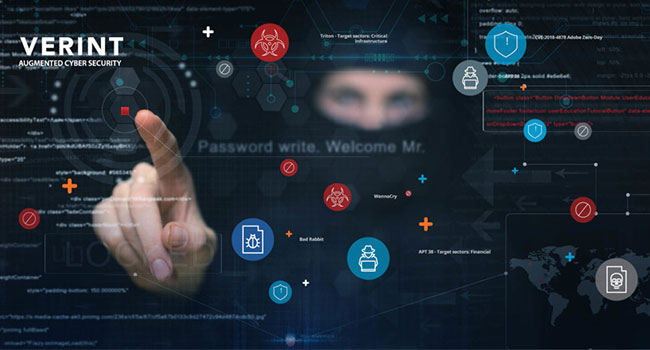
Moving From Legacy to Innovation
How Verint has moved from traditional VMS to integrated cyber intelligence
- By Haley Samsel
- Feb 01, 2020
As every security professional knows well, the sector
is changing rapidly thanks to emerging developments
in artificial intelligence and the migration
from traditional systems to integrated cyber
and physical security operations.
But what does it really take to move from a business focused
on legacy security solutions to one based on the latest technology
and cyber trends? Over the past three years, Verint has ventured
to find out.
Alan Stoddard, who serves as the vice president and general
manager for Verint’s situational intelligence solutions business
unit, has overseen a large portion of the company’s shift in strategy.
Since 2016, when Verint decided to merge its situational intelligence
unit with its cyber intelligence division, the company has
completely changed how it approaches comprehensive security
solutions.
“We really took a new look at security and started to realize—
with trends in technology and the industry, and the threat environment—
that physical and cyber security were really two sides
of the same coin,” Stoddard told Security Today last fall. “They
were both threats that security officers needed to protect against,
and whether people were breaking into the vaults to steal a million
dollars or doing it online, the result was the same.”
The fundamental change in the company’s approach to its role
as a security provider led Verint to shift from what Stoddard calls
a “legacy video management-based business” to one that is focused
on “actionable intelligence” in the physical and cyber areas.
That change has also been reflected in Verint’s business model.
In December, the company announced its decision to separate
Verint into two independent, publicly traded companies: one consisting
of its customer engagement business, and one that consists
of its cyber intelligence business. Verint CEO Dan Bodner said in
a statement that the change should be complete by Jan. 31, 2021.
Still, Verint’s mission remains the same: to provide organizations
with complete situational awareness so that they can more
quickly and accurately respond to their threat environment. This
is easier said than done, according to Stoddard.
He noted the challenges posed by integrating cyber and physical
security solutions are “huge,” in large part due to how clients
have traditionally separated cyber employees and their physical
security counterparts. The issues are less technological than
structural, and providers are still in the early days of the transition,
Stoddard said.
“While we believe that [integration] is inevitable, I think the
marketplace is spread out along the spectrum, with some of
them starting to move in that direction and some of them certainly
not,” Stoddard said. “What that means, essentially, is that
the responsibilities of those organizations? — functionally who’s
got which jobs, whether they’re combined into a single decision
entity, a single function, a single presence—varies quite a bit in
the marketplace.”
Verint’s strategy is also built on a growing desire to process the
enormous amount of data provided by the Internet of Things in
one comprehensive system. The security industry is moving from
a world of individual subsystems—covering everything from access
control, video surveillance and gunshot detection—to one
where all of those analytics from those systems can be processed
at the same time, Stoddard said.
“Each of the systems lived in a silo,” Stoddard said. “What
we’re really seeing now is a world where … we’d like to be able to
look at that data across all those different domains and use artificial
intelligence and machine learning to start to analyze things
that may be happening across those domains to provide actionable
intelligence to the operator.”
To accomplish this goal, Verint acquired NowForce in November
2018 to provide better dispatch services and respond
to customers. Through the enhanced security operations center
provided by NowForce, customers can not only “ingest” data
about their facilities but have a better understanding of how they
should respond, Stoddard said.
“I refer to it as 360 degrees of command, control and response,”
he said. “It’s not enough to be the first. You have to actually
respond to the situation.”
Though Verint has greatly enhanced its situational awareness
offerings, the company is always looking for new ways to expand
its analytical services. The company sees a big upside to this sector
as opposed to its traditional VMS business, Stoddard said.
“We see the whole concept of situational awareness as really
emerging,” Stoddard said. “By leveraging the intelligence and
treating all these different systems not as silos, but as data inputs
to an analytical engine, we can start to really bring a much higher
level of intelligence to the organization.”
This article originally appeared in the January / February 2020 issue of Security Today.